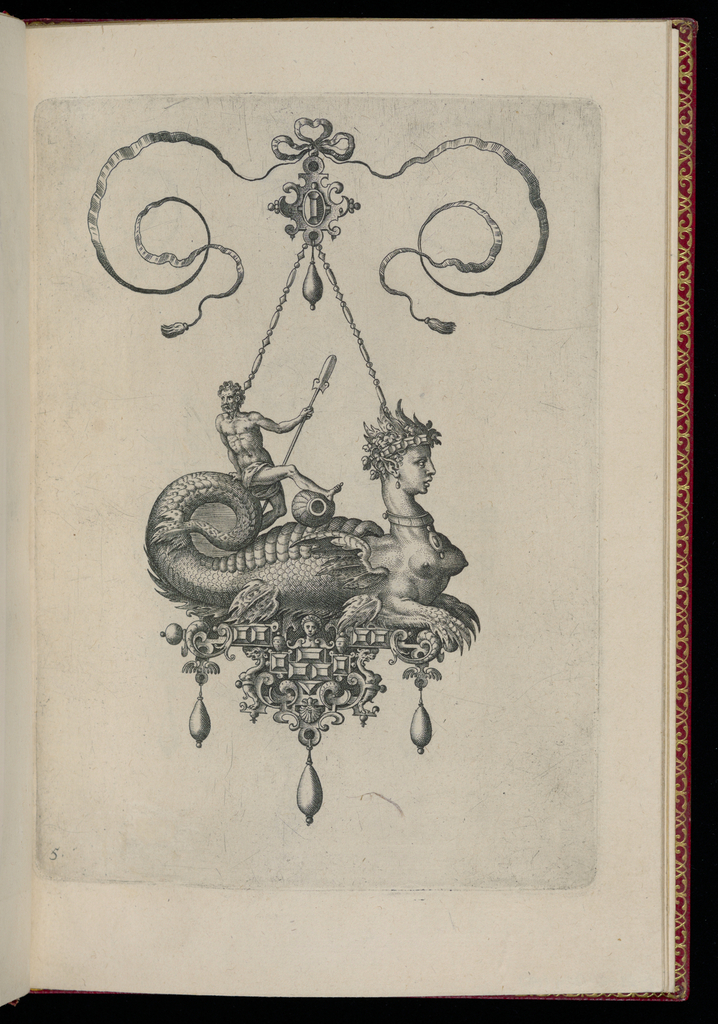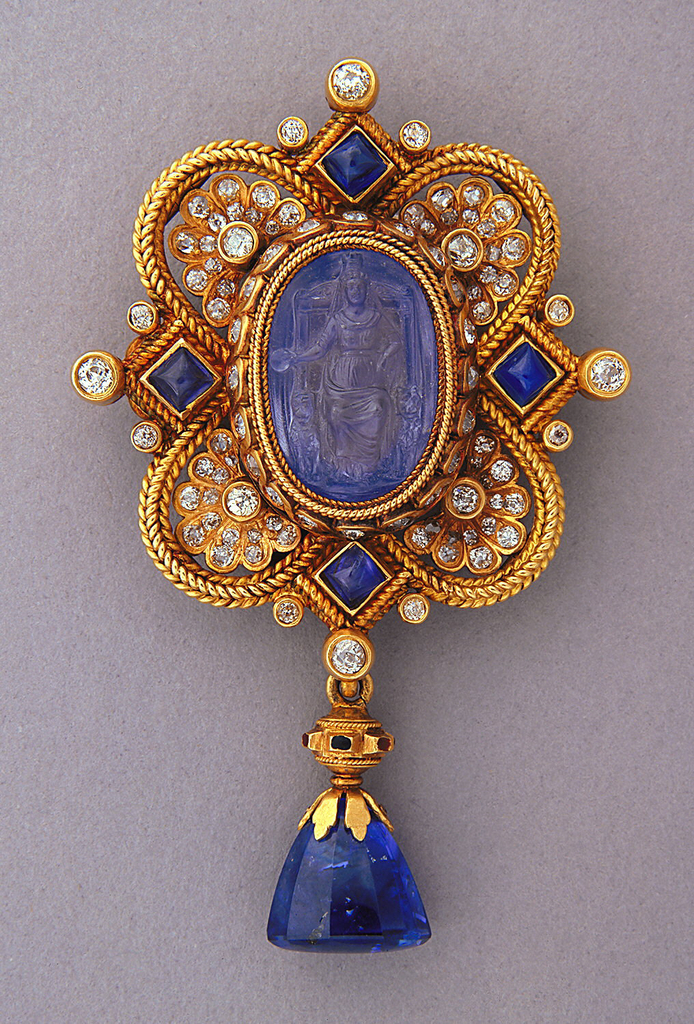An oarsman reclines on a sphinx’s scaly tail in this design for a pendant. Enameled, bejeweled, and dangling from a noblewoman’s gown, the imperious sphinx would appear fully tamed. Like the other marine monsters in this series of pendant designs by Hans Collaert, she symbolizes the sea’s abundance, harnessed by Flemish fishermen and merchants. These...
The Castellani jewelry firm (1814 – 1927) became known for its “Italian Archaeological jewelry,”[1] which consisted of copies and imitations of Roman, Greek, and Etruscan jewelry. The firm’s works in this style became especially popular starting in the 1850s due to a rise in nationalism as a result of efforts to unify Italy, though they...
I have always been captivated by the realism and voluptuousness of this frieze. This trompe l’oeil design, with its drapery swags, ostrich plumes, jewels, and tassels, is an over-the-top depiction of luxury materials. The attention to detail required to bring this degree of realism to light is exemplary. The drapery swags are flocked, then overprinted...


